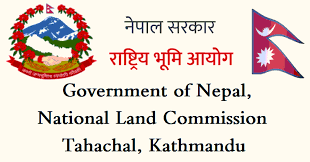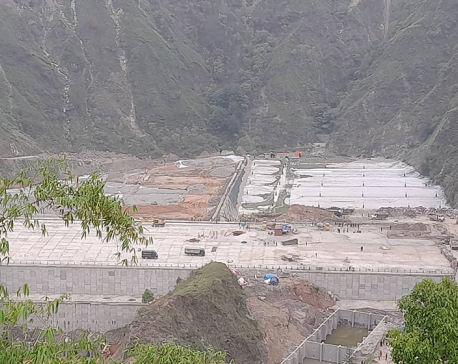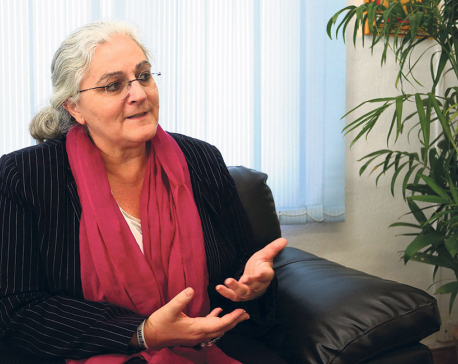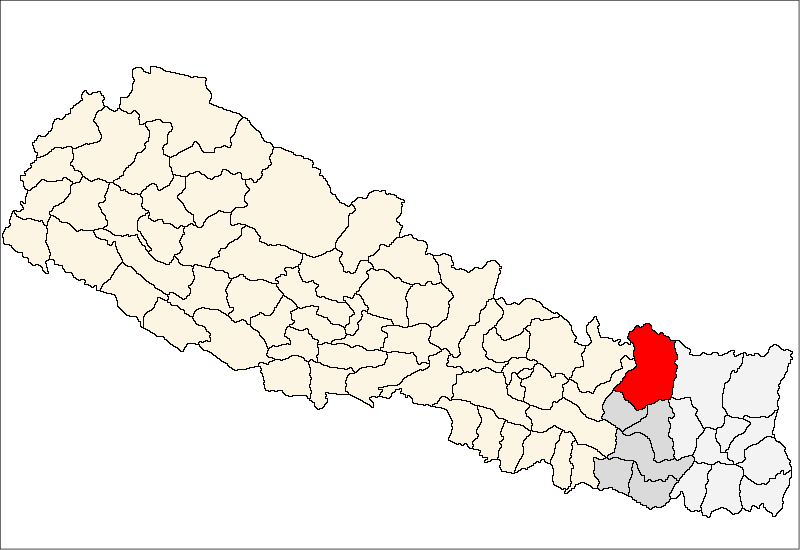
OR
Bagmati River floods underscore critical need for sustainable resolution to Kathmandu's landless squatters issue
Published On: August 10, 2023 07:00 PM NPT By: Republica | @RepublicaNepal

KATHMANDU, Aug 10: Maiya Ale has been residing on the Bagmati River banks with her children for the past 36 years. She is a landless squatter. After the death of her spouse of paralysis 11 years ago, the responsibility of raising and educating their children fell on her shoulders. She has been supporting her family as a street vendor in the Kathmandu Metropolitan City (KMC). But the KMC’s action against street vendors in the form of chasing them away and snatching their goods and stall equipment has taken its toll on them.
“As my daughter has a heart disease and my leg is broken, I am making a living as a street vendor. But the municipality is giving trouble to us on the streets. They snatch all our goods,” she complained. She settled down on the Bagmati River banks by constructing a hut after not finding any place to live in, she said. “It is our compulsion to live here as a landless squatter. All of the people residing here are landless squatters. Some of them were displaced by floods.”
Bishnu Maya Raut, who has been living in a landless squatter settlement in Balaju Jagrit Tole since 2028 BS has similar pains to share. As she does not have income sources, she said she is finding it hard to manage two meals a day for her family. She has constructed a hut on a river bank in the Kathmandu Valley. To add to their woes, the metropolis office has been troubling them, she complained. She said they have many legal grounds for living in the settlement.
They have the family identity card received from the local level, electricity meters, receipts of paying taxes, citizenship cards, migration registration, letters issued by the local level, registration (marriage, birth, death), Voter ID card, water and phone bills, residential construction documents received from the Urban Building Department, and details of the house numbers received from the ward, she said. “Despite all these legal grounds, the metropolis has been troubling us,” she complained.
As the right to live with dignity, the right to personal liberty, the right to equality and non-discrimination, the right to social justice, the right to social security and the right to privacy are prerequisites for enjoying human rights as guaranteed under the Constitution of Nepal and various international treaties, those living in the squatters’ settlements should not be forcibly removed without any alternatives, argued advocate Raju Prasad Chapagain.
It is the responsibility of the government at all three levels to ensure their social justice by protecting their homes and addressing their housing problems sustainably.
Chairperson of the National Land Commission, Keshab Niraula said efforts were on to resolve the problems of landless squatters in a sustainable manner. CPN (Maoist Centre) Deputy General Secretary Pampha Bhusal has stressed the need for finding a long-term solution to their problems instead of forcibly evicting them.
According to executive director of the Nepal Mahila Ekata Samuha, Bhagawati Adhikari, the landless squatters have been living in various squatter settlements in the Kathmandu Valley for from 15 to 50 years.
For the management of the problems of landless squatters, the Department of Urban Development and Building Construction in 2065 BS had mentioned squatter settlement management in its annual program. Similarly, the government had prepared a policy to identify and manage landless squatters living on the banks of the Kathmandu Valley rivers by allocating Rs 150 million in the fiscal year, 2065/66 BS.
(RSS)
You May Like This

Locals threaten to obstruct dumping of garbage in Banchare Danda from August 17
KATHMANDU, July 28: The locals of Banchare Danda have announced that they will not allow the Kathmandu Valley’s waste to... Read More...

Migration is good. It just has to be done safely
December 18 is marked as International Migrants Day every year. Although both domestic and international migrations have been taking place... Read More...

Social trend of migration effecting more migration
KATHMANDU, Feb 9: Rather than solely due to the lack of job opportunities in the home country, the existing social trend... Read More...




Just In
- NEA Provincial Office initiates contract termination process with six companies
- Nepal's ready-made garment exports soar to over 9 billion rupees
- Vote count update: UML candidate continues to maintain lead in Bajhang
- Govt to provide up to Rs 500,000 for building houses affected by natural calamities
- China announces implementation of free visa for Nepali citizens
- NEPSE gains 14.33 points, while daily turnover inclines to Rs 2.68 billion
- Tourists suffer after flight disruption due to adverse weather in Solukhumbu district
- Vote count update: NC maintains lead in Ilam-2













Leave A Comment